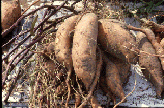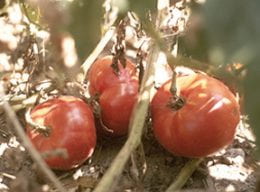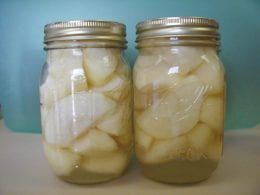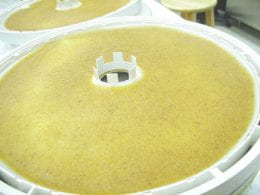
Source: Fightbac.org
Franken-BAC wants you to have a safe Halloween bash! Keep these tips in mind to keep your ghouls and goblins food safe.
- Scare BAC! (foodborne bacteria) away by keeping all perishable foods chilled until serving time. These include, for example, finger sandwiches, cheese platters, cut fruit or tossed salads, cold pasta dishes with meat, poultry, or seafood, and cream pies or cakes with whipped-cream and cream-cheese frostings. Cold temperatures help keep most frightful bacteria from multiplying.
- To keep party trays cold, fill lids with ice and place trays on top. Place bowls of salads cold by nesting them in larger bowls of ice.
- Arrange food on several small platters. Refrigerate platters of food until it is time to serve, and rotate food platters within two hours.
- Don’t leave perishable goodies out for more than two hours at room temperature (1 hour in temperatures above 90°F).
- When whipping up Halloween treats, don’t taste dough and batters that contain uncooked eggs or raw flour.
- Beware of spooky cider! Unpasteurized juice or cider can contain harmful bacteria such as E.coliO157:H7 and Salmonella. Serve pasteurized products at your Halloween party.
- Remind kids (and adults too!) to wash their hands before and after chowing down to help prevent foodborne illness.
 Sweet potatoes are a favorite fall vegetable packed with lots of nutrition. While they can be stored a room temperature, they can also be preserved for easy meal preparation later.
Sweet potatoes are a favorite fall vegetable packed with lots of nutrition. While they can be stored a room temperature, they can also be preserved for easy meal preparation later. As fall approaches, fall gardens will start to wind down. Tomato plants may still be producing tasty tomatoes, which can be enjoyed fresh. But if a frost or freeze has occurred while tomatoes are on the vine, do not can those tomatoes. Preserve them by freezing or dehydrating for later use.
As fall approaches, fall gardens will start to wind down. Tomato plants may still be producing tasty tomatoes, which can be enjoyed fresh. But if a frost or freeze has occurred while tomatoes are on the vine, do not can those tomatoes. Preserve them by freezing or dehydrating for later use.

